The AMD FX-9590, launched in 2013, holds a unique place in CPU history as the first commercially available processor to achieve a 5.0 GHz turbo clock speed. However, its high performance came with a significant 220W Thermal Design Power (TDP), placing extreme demands on the motherboards of its era. For enthusiasts still running this processor or those acquiring one for a retro build, finding a suitable motherboard presents a significant challenge.
This article provides a purely informational, technical breakdown of five motherboards commonly associated with the FX-9590. It is crucial to note that much of the information available online incorrectly pairs this CPU with modern motherboards. This guide will clarify these incompatibilities, review the specifications of historically appropriate boards, and explain the current landscape for this legacy platform. For those exploring system builds, understanding if you need a good motherboard for gaming is a foundational concept.
A Critical Note on AMD FX-9590 Compatibility
Crucial Information: The AMD FX-9590 processor uses the Socket AM3+. It is physically and electrically incompatible with motherboards that use the AM4 or AM5 sockets, which were designed for the later AMD Ryzen series of processors. Any information suggesting the use of a B450, X570, or newer chipset motherboard with an FX-9590 is incorrect. Pairing them is impossible. This guide will analyze both incompatible and compatible boards that are often mentioned in relation to the FX-9590 to provide absolute clarity.
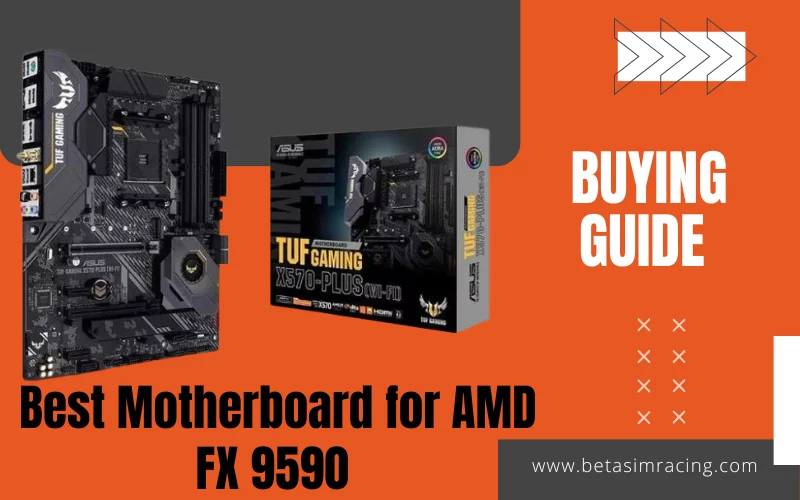
Comparison of Commonly Cited Motherboards for the FX-9590
This table offers a high-level overview of the motherboards discussed in this guide. It immediately highlights the fundamental compatibility differences, which are critical for any user considering these components.
| Feature | ASUS Prime X570-P | GIGABYTE B450 AORUS PRO Wi-Fi | ASUS ROG STRIX B450-F | ASUS Crosshair V Formula-Z | MSI 970 GAMING |
| CPU Socket | AM4 | AM4 | AM4 | AM3+ | AM3+ |
| Compatibility | Incompatible | Incompatible | Incompatible | Compatible | Conditionally Compatible |
| Chipset | AMD X570 | AMD B450 | AMD B450 | AMD 990FX / SB950 | AMD 970 / SB950 |
| Form Factor | ATX | ATX | ATX | ATX | ATX |
| RAM Type | DDR4 | DDR4 | DDR4 | DDR3 | DDR3 |
| Max RAM | 128 GB | 64 GB | 64 GB | 32 GB | 32 GB |
| PCIe Generation | PCIe 4.0 | PCIe 3.0 | PCIe 3.0 | PCIe 2.0 | PCIe 2.0 |
| M.2 Slots | 2 | 2 | 2 | 0 | 0 |
| SATA Ports | 6 x 6Gb/s | 6 x 6Gb/s | 6 x 6Gb/s | 8 x 6Gb/s | 6 x 6Gb/s |
| Status | Available (New/Used) | Discontinued (Used) | Discontinued (Used) | Discontinued (Used) | Discontinued (Used) |
In-Depth Technical Reviews of Listed Motherboards
This section provides a detailed analysis of each motherboard from the original query. The products are grouped by their socket type to reinforce compatibility.
Incompatible AM4 Socket Motherboards
The following three motherboards are built for the AMD Ryzen processor lineup and are not compatible with the AMD FX-9590. They are presented here for informational purposes to correct common misconceptions.
1. ASUS Prime X570-P
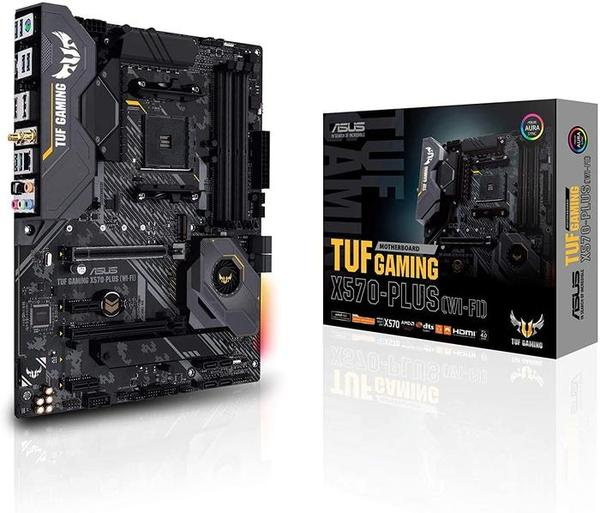
Key Specifications
- Socket: AM4
- Chipset: AMD X570
- Form Factor: ATX
- Memory: 4 x DIMM, Max. 128GB, DDR4
- Expansion Slots: 1 x PCIe 4.0 x16, 1 x PCIe 4.0 x16 (x4 mode), 3 x PCIe 4.0 x1
- Storage: 2 x M.2 Socket 3, 6 x SATA 6Gb/s ports
Architectural Overview
The ASUS Prime X570-P is a mainstream ATX motherboard from the early Zen 2 era, designed to support AMD Ryzen 2000, 3000, 4000G, and 5000 series CPUs. Its primary feature is the X570 chipset, which introduced PCIe 4.0 support for graphics cards and NVMe SSDs, offering significantly higher bandwidth than previous generations. It includes robust power delivery, comprehensive cooling options with a dedicated chipset fan, and modern connectivity like USB 3.2 Gen 2.
Current Status and Compatibility Analysis (2025)
The Prime X570-P is still a viable board for a mid-range to high-end AM4 build. However, it is fundamentally incompatible with the AMD FX-9590. The socket mismatch (AM4 vs. AM3+) and memory incompatibility (DDR4 vs. DDR3) make it impossible to pair these components.
2. GIGABYTE B450 AORUS PRO Wi-Fi
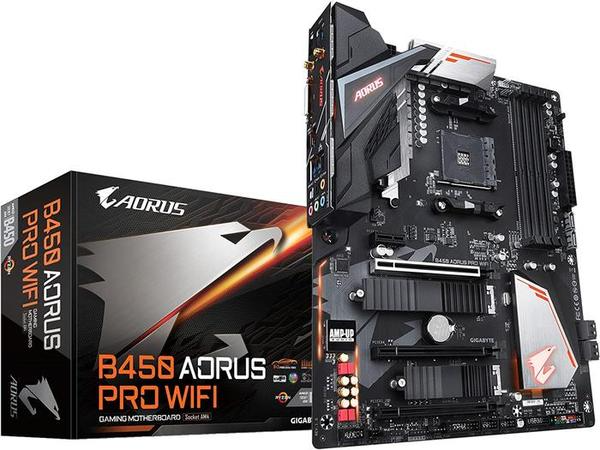
Key Specifications
- Socket: AM4
- Chipset: AMD B450
- Form Factor: ATX
- Memory: 4 x DIMM, Max. 64GB, DDR4
- Expansion Slots: 1 x PCIe 3.0 x16, 1 x PCIe 2.0 x16 (x4 mode), 2 x PCIe 2.0 x1
- Storage: 2 x M.2 Socket 3, 6 x SATA 6Gb/s ports
Architectural Overview
The GIGABYTE B450 AORUS PRO Wi-Fi was a popular mid-range motherboard for AMD Ryzen 1000, 2000, 3000, and some 5000 series processors (with a BIOS update). It features the B450 chipset, offering a balance of performance and value with PCIe 3.0 support, dual M.2 slots, and integrated Intel 802.11ac Wi-Fi. Its design includes heatsinks on the VRM and an I/O shield for a more premium feel.
Current Status and Compatibility Analysis (2025)
This motherboard is discontinued but widely available on the used market. It remains a solid choice for a budget-conscious AM4 gaming PC. It is not compatible with the AMD FX-9590 due to the AM4 socket and DDR4 memory requirement.
3. ASUS ROG STRIX B450-F
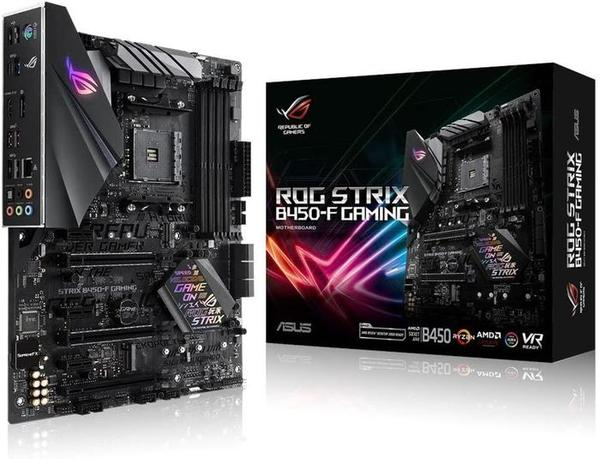
Key Specifications
- Socket: AM4
- Chipset: AMD B450
- Form Factor: ATX
- Memory: 4 x DIMM, Max. 64GB, DDR4
- Expansion Slots: 2 x PCIe 3.0 x16, 3 x PCIe 2.0 x1
- Storage: 2 x M.2 Socket 3, 6 x SATA 6Gb/s ports
Architectural Overview
The ASUS ROG STRIX B450-F was positioned as a higher-end B450 board, incorporating premium features from the Republic of Gamers line. It offered a pre-mounted I/O shield, improved SupremeFX audio, extensive RGB lighting options with Aura Sync, and a stronger power delivery system compared to entry-level boards. It supported a wide range of Ryzen CPUs, making it a flexible option for gamers.
Current Status and Compatibility Analysis (2025)
Like other B450 boards, the ROG STRIX B450-F is discontinued but remains popular on the second-hand market. It is an excellent example of a feature-rich AM4 board but cannot be used with an AMD FX-9590 because of its AM4 socket.
Compatible but Discontinued AM3+ Socket Motherboards
The following two motherboards use the correct AM3+ socket. However, they have been discontinued for many years and can only be found on the used market.
4. ASUS Crosshair V Formula-Z
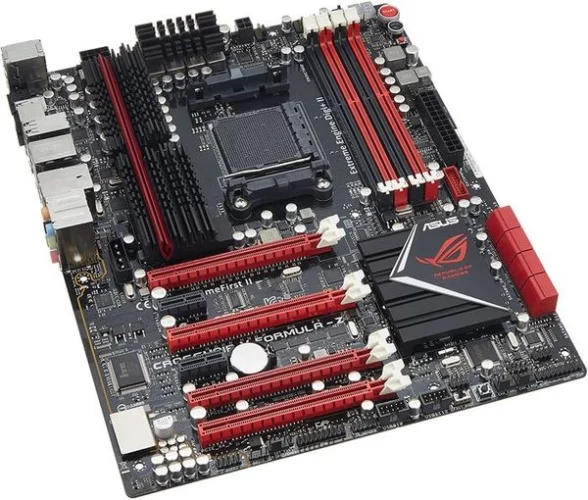
Key Specifications
- Socket: AM3+
- Chipset: AMD 990FX / SB950
- Form Factor: ATX
- Memory: 4 x DIMM, Max. 32GB, DDR3 up to 2400MHz (O.C.)
- Expansion Slots: 3 x PCIe 2.0 x16, 1 x PCIe 2.0 x16 (x4 mode), 2 x PCIe 2.0 x1
- Storage: 8 x SATA 6Gb/s ports
Architectural Overview
The ASUS Crosshair V Formula-Z was a premium, enthusiast-grade motherboard and one of the few officially certified to handle the 220W TDP of the FX-9590 out of the box. Its AMD 990FX chipset and robust “Extreme Engine Digi+ II” 8+2 phase power design were engineered for extreme overclocking. It featured high-end components, including SupremeFX III audio, an Intel Gigabit LAN controller, and extensive thermal armor and heatsinks on the VRM and chipset, which was essential for stabilizing the power-hungry FX-9000 series CPUs.
Current Status and Compatibility Analysis (2025)
This motherboard is long discontinued and is considered a collector’s item for high-end retro builds. It is one of the most capable platforms ever made for the FX-9590. If found in good working condition, it represents a technically ideal match. However, potential buyers should be aware of the risks of aging electronics, such as capacitor degradation. Learning how to clean a motherboard and inspect it for damage is crucial.
Alternative Consideration: As there are no new direct alternatives, a user seeking a modern system with similar enthusiast-level capabilities would need a complete platform upgrade. For example, a system based on an AMD Ryzen 9 or Intel Core i9 processor with a high-end X670 or Z790 motherboard would represent the contemporary equivalent in terms of market position.
5. MSI 970 GAMING
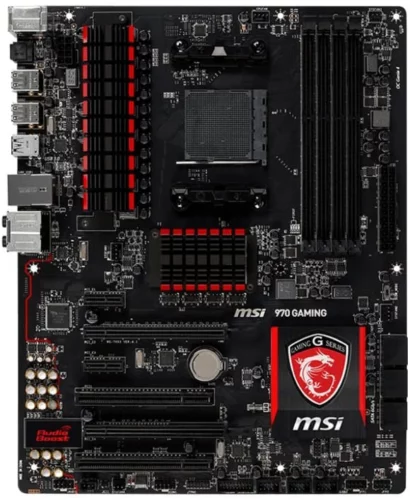
Key Specifications
- Socket: AM3+
- Chipset: AMD 970 / SB950
- Form Factor: ATX
- Memory: 4 x DIMM, Max. 32GB, DDR3 up to 2133MHz (O.C.)
- Expansion Slots: 2 x PCIe 2.0 x16, 2 x PCIe 2.0 x1, 2 x PCI
- Storage: 6 x SATA 6Gb/s ports
Architectural Overview
The MSI 970 GAMING was a popular mid-range AM3+ motherboard that brought modern gaming-centric features to the aging platform, such as a Killer E2205 LAN controller and “Audio Boost 2” technology. It utilized the AMD 970 chipset, a slightly scaled-down version of the 990FX. While it was a capable board for most FX processors, its power delivery system was not officially designed for the 220W TDP of the FX-9590.
Current Status and Compatibility Analysis (2025)
This motherboard is discontinued. Crucially, many official sources and user reports indicate that the MSI 970 GAMING does NOT officially support 220W TDP processors like the FX-9590. Attempting to run an FX-9590 on this board, especially under load, could lead to VRM overheating, CPU throttling, and potential hardware damage. It is only suitable for FX processors with a TDP of 125W or less.
Alternative Consideration: For users looking for an AM3+ board that could reliably handle high-TDP CPUs, the proper path would have been to seek out 990FX chipset boards with robust power delivery, like the aforementioned Crosshair V Formula-Z or the GIGABYTE GA-990FXA-UD3/UD5/UD7 series. Finding any of these new is impossible.
The Reality of Finding an FX-9590 Motherboard in 2025
Building with or maintaining an AMD FX-9590 system today is an exercise in sourcing legacy hardware. The decision on when you should upgrade your motherboard becomes less about choice and more about necessity.
The Scarcity of the AM3+ Platform
New AM3+ motherboards have not been manufactured for many years. The only source for these components is the used market (e.g., eBay, local marketplaces). Supply is limited, and the condition of these boards can vary significantly.
Considerations for Buying Used Hardware
When purchasing a decade-old motherboard, a thorough inspection is critical. Look for:
- Bulging or Leaking Capacitors: A common sign of failure on older boards.
- Physical Damage: Check for bent pins in the socket, damaged traces, or cracked heatsinks.
- Functionality: If possible, see the board running before purchase. If not, purchase from a seller with a good return policy.
- BIOS Version: Ensure the board has a BIOS that supports the FX-9000 series. If not, you may need an older, supported CPU just to perform a BIOS update.
Core Technical Requirements for an FX-9590 Motherboard
If you are committed to finding a compatible board, focus on these non-negotiable technical features.
Socket AM3+ with 220W TDP Support
This is the most basic requirement. The motherboard must have a Socket AM3+ and be explicitly rated by the manufacturer to support 220W processors. This information was typically found on the CPU support list on the manufacturer’s website.
Robust VRM and Heatsink Solution
The Voltage Regulator Module (VRM) is responsible for providing clean, stable power to the CPU. The 220W draw of the FX-9590 puts immense stress on this component. A suitable motherboard must have:
- A High-Quality Power Phase Design: Boards with 8+2 phases or better are ideal.
- Substantial VRM Heatsinks: Large, finned metal heatsinks covering the VRMs are mandatory to prevent overheating and thermal throttling.
Chipset: The 990FX Advantage
While some 970 and 990X chipset boards exist, the AMD 990FX chipset was the top-tier option for the AM3+ platform. It offered the most PCIe lanes and was typically paired with the most robust board designs, making it the most suitable choice for a flagship CPU like the FX-9590.
Memory and Connectivity Standards
The AM3+ platform is limited to older technology standards that are important to recognize:
- RAM: Only DDR3 memory is supported.
- PCI Express: The platform operates on PCIe 2.0, which has half the bandwidth per lane of PCIe 3.0 and a quarter of PCIe 4.0.
- Storage: Connectivity is limited to SATA 6Gb/s ports. There is no native support for M.2 NVMe drives, although PCIe adapter cards can be used as a workaround.
Frequently Asked Questions (FAQ)
Is the AMD FX-9590 still a viable processor in 2025?
For modern gaming and productivity, the FX-9590 is not considered viable. Its single-threaded performance is significantly lower than even entry-level modern CPUs, and its high power consumption makes it highly inefficient. It is best suited for retro-computing enthusiasts or users with very light, heavily multi-threaded workloads.
Can an AM4 motherboard be used with an AMD FX-9590 CPU?
No. The AMD FX-9590 requires a Socket AM3+ motherboard. It is physically and electrically incompatible with the AM4 socket used by Ryzen CPUs.
What type of RAM is compatible with the AMD FX-9590?
The AMD FX-9590 and the entire AM3+ platform use DDR3 memory. It is not compatible with DDR4 or DDR5 RAM. Officially, it supports speeds up to 1866MHz, but many 990FX motherboards could achieve stable overclocks with higher-speed kits.
Why did the FX-9590 require a motherboard with a strong VRM?
The processor’s 220W TDP meant it drew a very high amount of electrical current. The motherboard’s VRM converts the 12V power from the PSU to the lower voltage the CPU needs. A weak VRM would overheat under this load, leading it to deliver unstable power and cause the CPU to throttle (reduce its speed) or the entire system to crash.
What is the difference between the AMD 990FX and 970 chipsets?
The primary difference was PCIe lane configuration. The 990FX officially supported two full-speed PCIe 2.0 x16 slots for SLI or CrossFire setups. The 970 chipset typically only supported a single PCIe 2.0 x16 slot, with the second slot running at reduced x4 or x8 speeds. As a result, manufacturers almost always built their most robust and feature-rich boards around the 990FX chipset.
What is a modern equivalent to an AMD FX-9590 system?
In terms of raw multi-core performance, a modern processor like an AMD Ryzen 5 5600X or an Intel Core i5-12400 would vastly outperform the FX-9590 in every metric, including single-threaded speed, multi-threaded output, and power efficiency, while costing significantly less to run. These CPUs would be paired with motherboards like a B550 board for the Ryzen 5 or a B660/B760 board for the Core i5.

Holding a Ph.D. in Computer Science, Dr. Alistair Finch is our chief PC Component Benchmark Analyst. He provides meticulous, data-driven analysis of CPUs and GPUs, moving beyond marketing claims to reveal their true performance. His guides help readers understand the intricate relationship between hardware architecture and real-world gaming frame rates.
